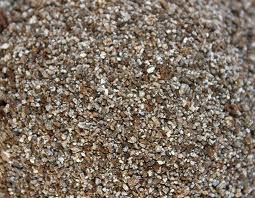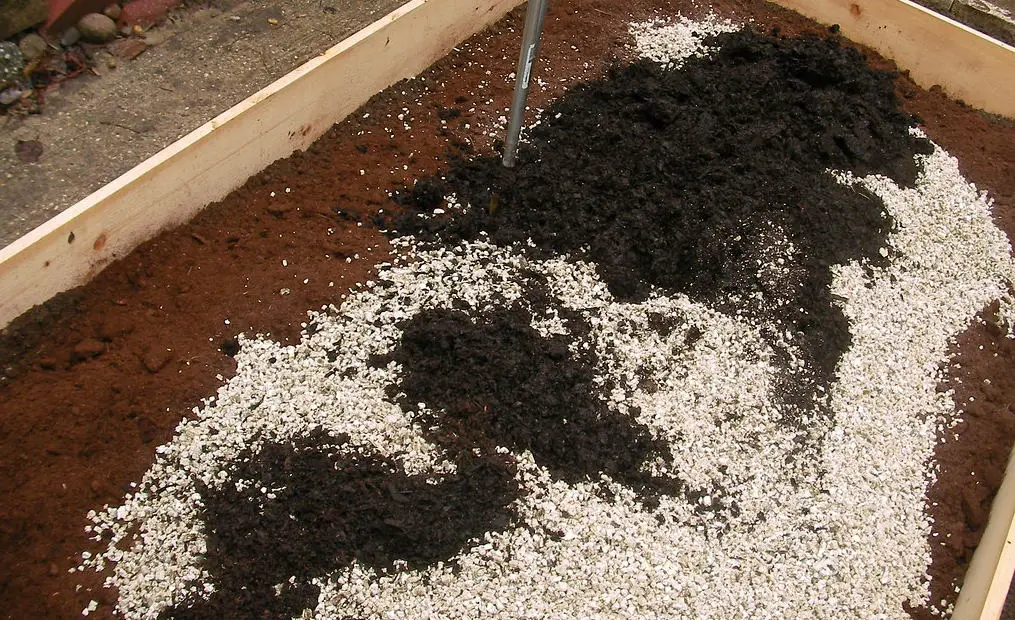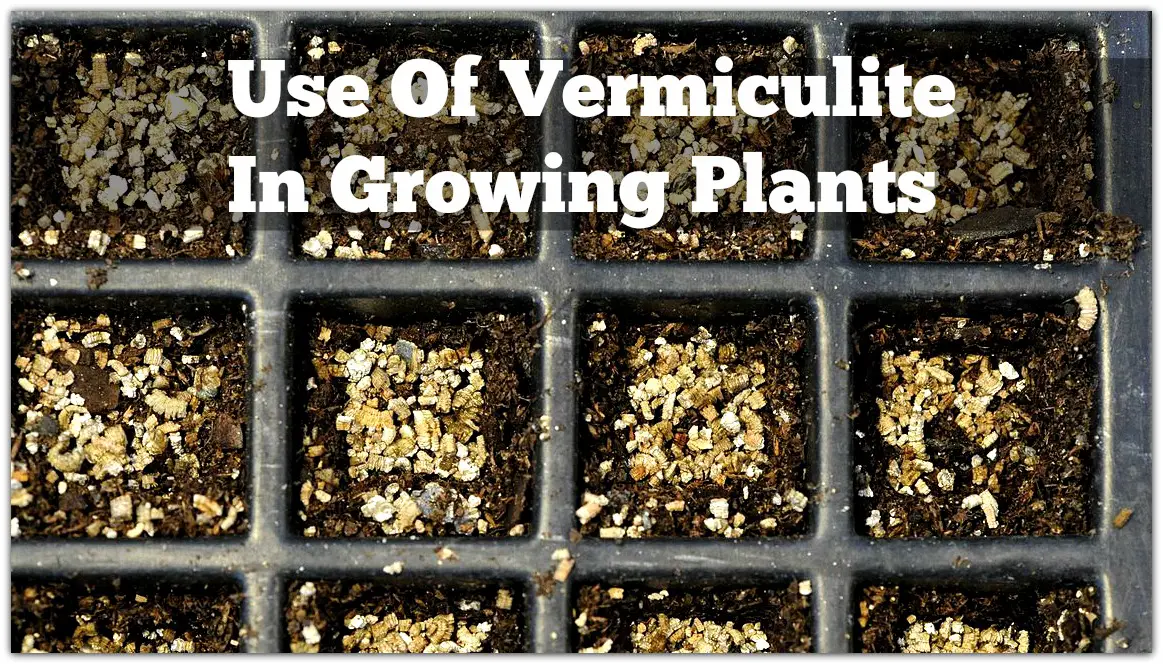We use affiliate links to run our site. When you buy through links on our site, we may earn an affiliate commission, without any added cost to you. Learn more
If you’re looking for an easy way to improve the drainage and aeration in your garden’s soil, look no further than vermiculite. This absorbent material helps aerate and drainage in soil, while also providing essential minerals to plants.
If you’re a gardener, chances are you’ve heard of vermiculite. But what is it? Vermiculite is a type of mineral that is mined and processed for use in a variety of ways, including gardening.
When used in gardening, vermiculite can help improve soil aeration and drainage while also providing essential nutrients to plants.
Though sometimes perlite and vermiculite are used as synonyms, they are very different in many aspects.
Today we will talk about Vermiculite, one of the growing mediums that is not talked much about. and what you need to know about how to use vermiculite in your garden.
This post is a part of our Soil-less growth mediums series, where you can find information about other growing mediums.
so let’s get started with vermiculite…
What is Vermiculite?
Vermiculite is a silicate material that is used in horticulture as a growing medium. The name originates from the word vermiculture which means to breed worms.
Vermiculite can hold potassium, Calcium, Magnesium, and Ammonium which are needed for plant growth. The color, composition, and pH of vermiculite vary from mine to mine.
Is Vermiculite Toxic?
Vermiculite itself is not toxic and is safe to use. Earlier when vermiculite was mined, the ore often contained asbestos. Asbestos is harmful and can cause lung cancer and other diseases if inhaled. And so vermiculite was said to be dangerous.
Nowadays vermiculite is mined under strict industry protocols and is very safe to use.
Is Vermiculite Organic?
Vermiculite by nature is inorganic. This means that it is not alive, and it does not come from living things. It is also sterile, i.e, it does not contain any microorganisms that could cause disease.
Vermiculite is Inert which means it does not react with other substances. This makes it safe to use in many different applications.
How Vermiculite is Made?
Technically, vermiculite refers to a large group of hydrated laminar magnesium-aluminum-iron silicates, that somewhat looks like mica. You cannot use this vermiculite for growing plants.
Horticultural vermiculite is made by exfoliating the vermiculite rocks. After mining, vermiculite rocks are heated at a temperature above 1100 deg F. At this temperature, the water inside the vermiculite rocks becomes steam and expands the rock into worm-like particles.
Types of Vermiculite:
There are mainly two types of Vermiculite that are used for different purposes.
- Crude Vermiculite
- Exfoliated Vermiculite
1. Crude Vermiculite:
Crude vermiculite is vermiculite that has not been heated or expanded. It is the raw form of the mineral before it is processed into other products. Crude vermiculite typically contains impurities such as clay and sand, which need to be removed before it can be used for most applications.
Crude vermiculite can be of five primary grades viz. large, medium, fine, superfine, and micron based upon particle size.
It is not suitable for growing plants so you can not use this vermiculite for gardening.
2. Exfoliated Vermiculite:
Exfoliated vermiculite is produced through a process of expanding the raw mineral ore under high temperatures. Exfoliated variety is widely popular among gardeners as you can use this vermiculite for gardening.
Exfoliated vermiculite can be of different grades. Like crude vermiculite, exfoliated vermiculite comes in micron, superfine, fine, medium, and large grades.
Just remember, finer grades will be more compact than the larger grades, which helps reduce soil compaction. What grade is best for you depends on your soil conditions.
| Vermiculite grade | Particle size (in diameter) |
| Large Grade | ½ inch |
| Medium Grade | 3/10 inch |
| Fine grade | 1/10 inch or less |
How To Sterilize Vermiculite:
If you want to sterilize vermiculite you can do it in two ways.
Sterilize Vermiculite Using A Gas Oven:
Heat up the vermiculite to reach a temperature above 180°F and sustain that for 30 minutes. It will also kill seeds, insect eggs, and larvae.
It is a popular method for sterilizing vermiculite. A word of caution, sterilizing vermiculite can create a lot of odor. So make sure you are doing it outdoors and not in your kitchen.
Sterilize Vermiculite by Using A Microwave Oven:
You can also sterilize by microwaving moistened vermiculite for three to five minutes, depending on your microwave’s power rating.
The advantages of microwaving vermiculite are that it is faster than oven treatment, and as it is portable you can reduce the odor.
Just remember, while sterilizing, microwave ovens can heat up quickly, but they also leave cooler spots that can be very hard to find. And also this process only works with a very small amount of vermiculite. If you have a very large amount of vermiculite you can try the solarization method for sterilization.
Use of Vermiculite in Gardening:
Vermiculite can retain more water than perlite. Its retention of water makes it good for sustaining the growth of seeds. It contains useful trace minerals. Its color is not as obvious as perlite. It is generally cheaper than perlite.

You can combine exfoliated vermiculite with peat moss or coconut coir and make a good soil-less growth medium. This can be used in the home as well as in professional gardening uses.
Vermiculite can be a good medium for seed germination either used solely or in combination with other mediums. You need very little watering for growing plants in vermiculite. Vermiculite does not rot or turn moldy and it helps the roots of the young plants to anchor and grow.
They can be used as soil conditioners. A little mixing of vermiculite can make your heavy, sticky soil breathable light. It creates air channels and thus improves aeration.
Although not every time, in many cases vermiculite is can be infested with asbestos which sometimes related to asbestos-related diseases, like mesothelioma.
It is also far heavier when compared with perlite so durability problem is always associated with it. At times it can trap too much water leaving the medium as soupy soil.
How Does Vermiculite Works?
Vermiculite works with both dense and loose soils but in different ways. The surface of the exfoliated vermiculite allows it to hold a large amount of water. It then slowly releases it back into the soil to your plant’s roots. This feature of vermiculite makes it ideal for loose soil like sandy and loamy soils.
On the other hand, It also helps aerate the soil and loosen up the dense soils such as clay. This added aeration can give roots better access to nutrients and prevent waterlogged soil, helping plants thrive.
How much vermiculite to add to soil:
Use 1/3 to 1/2 vermiculite in your potting soil for containers or when building your raised beds, or improve your garden soil by adding it in the spring with your other soil amendments and compost.
How to Use Vermiculite:
Vermiculite along with perlite is very good for soil amendment. They can be used in several ways throughout the garden — indoors and out — depending on your needs.

- In a container put some of the vermiculite and add some water. It’s best to dampen the vermiculite before using it.
- Mix Vermiculite, coarse sand, and coco coir in a 1:1:1 ratio in a container (a wheelbarrow is a good choice for this type of work). Now fill seed-starting trays or small pots with this mixture. This will be used for germinating seeds indoors.
- If you are planning to plant seeds directly in the garden, add a little layer of vermiculite when starting seeds outdoors. This will prevent your garden soil from forming a crust.
- You can create a good-quality potting mix by mixing equal parts of vermiculite and peat moss and a handful of slow-release fertilizer granules.
- Vermiculite can also be helpful in amending the container soil. Add 50 percent vermiculite to your container soil. If you have sandy soil it will improve its water and nutrient-holding capacity. Whereas if you have clay soil, this will increase the drainage of the soil. If you want to amend garden soil outdoors, you can put a 3-inch deep layer of vermiculite for 6- inch deep topsoil.
Things You Will Need for Applying Those Ideas:
- Wheelbarrow or container
- Shovel
- Seed-starting trays or pots
Remember:
- Always use horticultural vermiculite. Vermiculites that are meant for construction do not perform very well in the garden.
Why Add Vermiculite To The Soil:
The primary reason we add vermiculite to the soil is that it improves the water holding capacity as well as the aeration of the soil. So it basically improves your soil quality. Vermiculite also helps in faster seed germination.
How Does Vermiculite Help Your Plants?
Apart from holding water, vermiculite can also hold calcium, Magnesium, Ammonium, etc which are crucial to the plant’s nutrition. So vermiculite helps the plant in quite a few ways:
- It increases the rate at which the seeds germinate.
- It helps the roots by providing good aeration to the soil.
- Holds up essential minerals for the plants.
Where to buy vermiculite:
Vermiculite is mined in the United States, Brazil, Zimbabwe, China, and South Africa. They are generally clean, odorless, and non-toxic by nature and are marketed in the form of brown cubes.
The best place to buy vermiculite is at your nearby garden store or nursery. Talk to your nurseryman about the type of vermiculite and what suits your needs. Alternatively, you can buy it from amazon.
Other Vermiculite Uses:
Apart from Gardening, vermiculite is used as an insulator worldwide. Other usages include uses as packaging material, a substrate for incubation of eggs, waste treatments, etc.
Conclusion:
So as you can see, vermiculite is a great material to use in gardening. It is lightweight and easy to work with, and it can help improve the drainage and aeration of your soil.
Additionally, vermiculite can help retain moisture and nutrients in the soil, making it an ideal choice for gardeners who want to improve the health of their plants.
If you are looking for a way to improve your gardening, vermiculite may be a good option for you.
Thanks for reading. Hope you enjoyed the article. if you find the information helpful don’t forget to share it with others too.
Amazon and the Amazon logo are trademarks of Amazon.com, Inc, or its affiliates.

Can you recommend as to wherefrom buy perilite and vermiculite. I am based at Lucknow.
Didn't mention that some vermiculite is high in lead.
Isn't there a convenience store there that carries that sort of thing?
From what you say, vermiculite could be a problem. How can contamination problems be avoided. I have been mixing good quality potting mix with coir and perlite for several years with pretty good success. I have to fertilize as the season progress and the plants use up whatever is in the potting mix.
Hello, vermiculite is not typically recommended for clay soils. Perlite is better because it doesn’t compact like vermiculite making your soil more dense. The asbestos issue. Was one mine that has been closed since 1990. All current ore sources are tested and regulated. Check with your supplier they should be happy to share their knowledge about the issue. Lastly I’ve never seen vermiculite cheaper than perlite. But I only manufacture and sell it in the US and Canada.